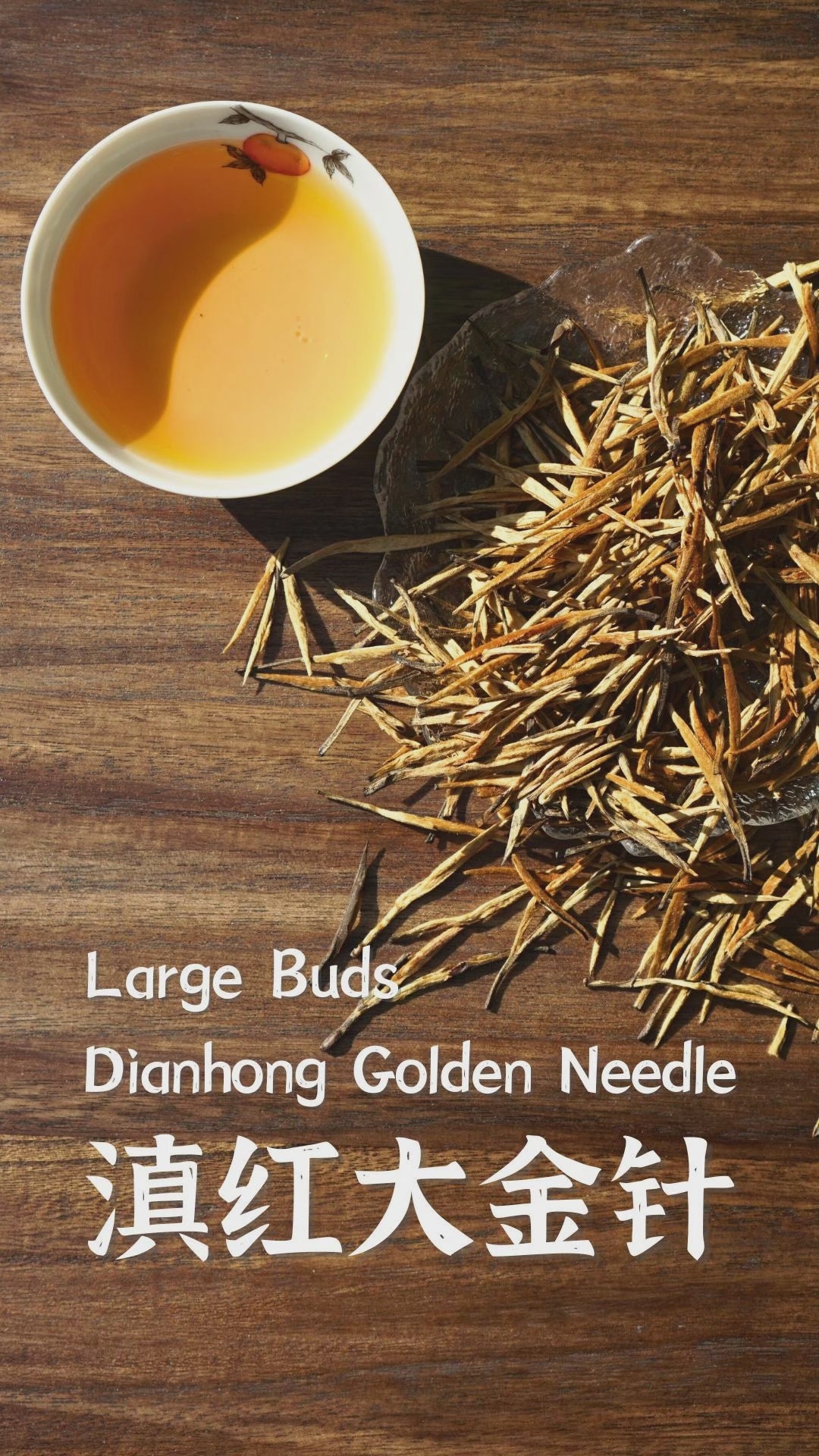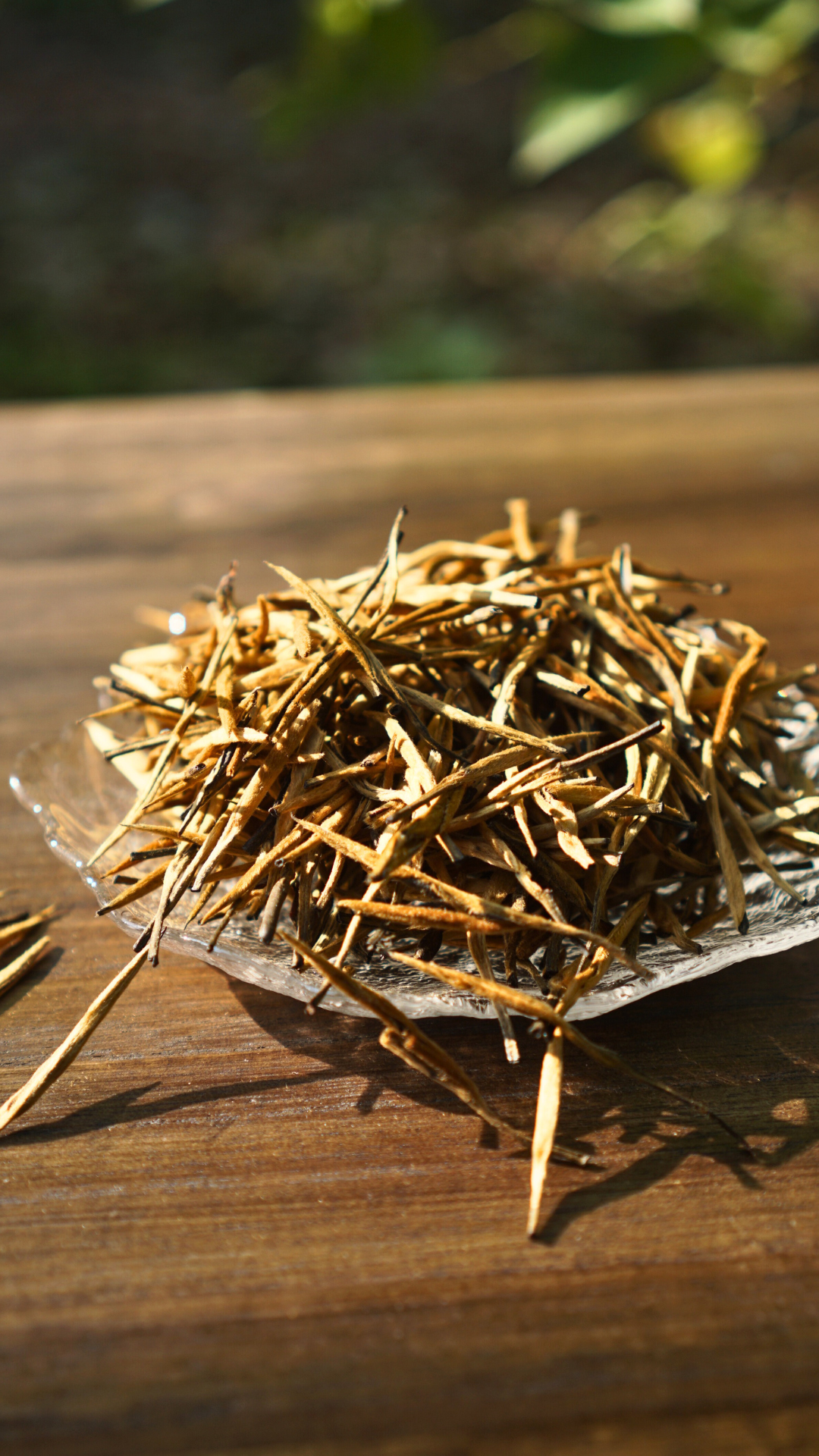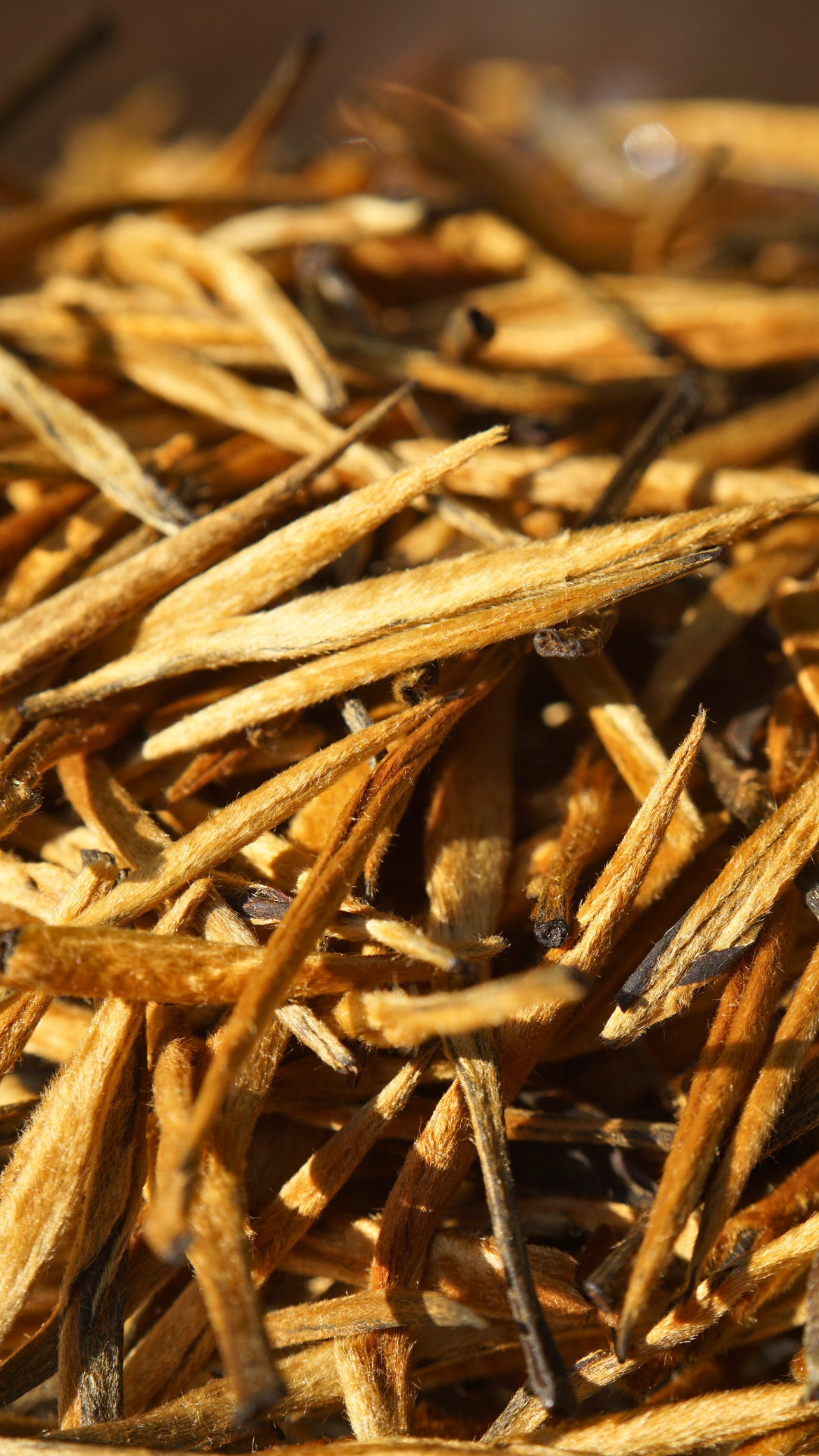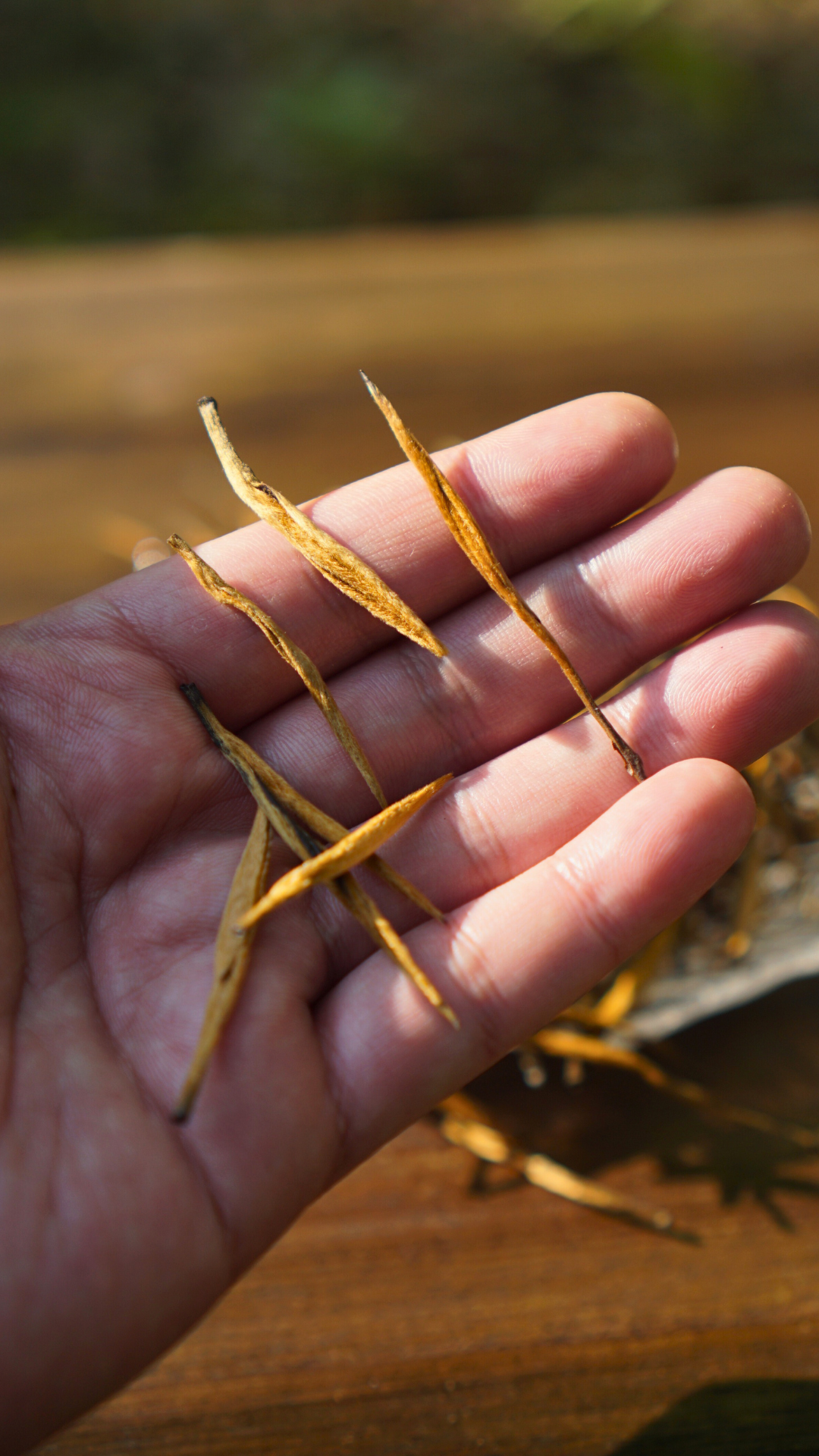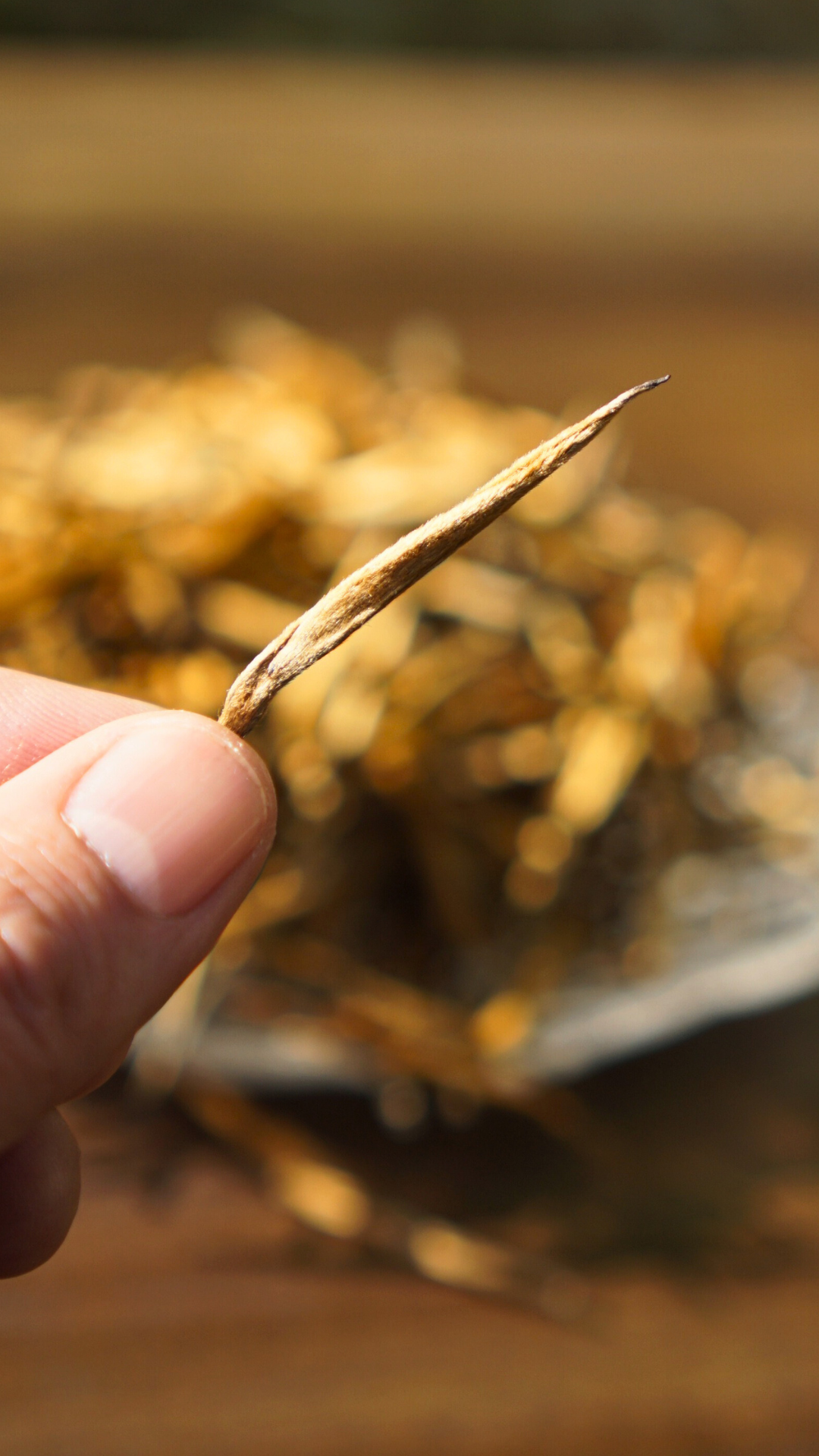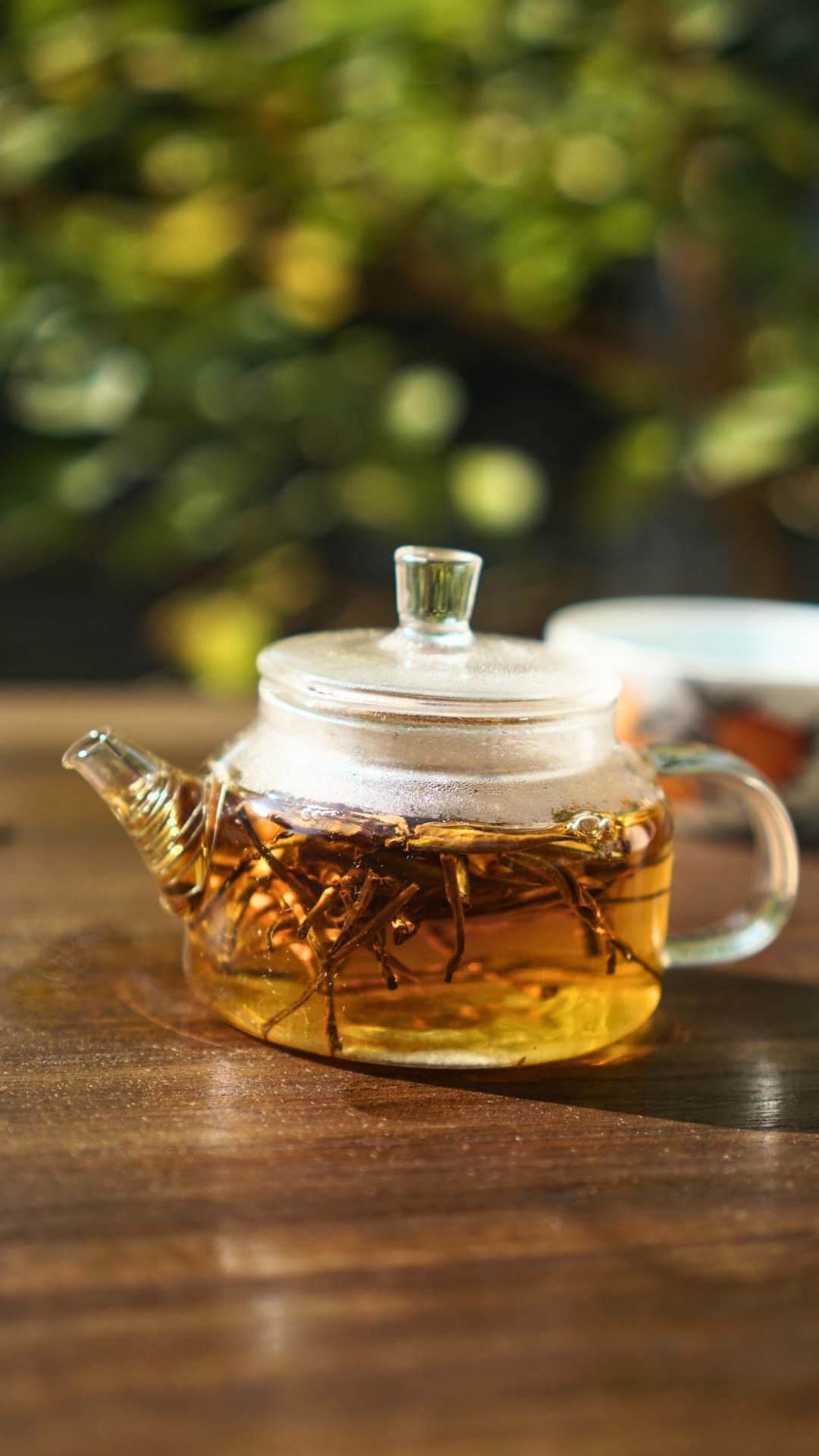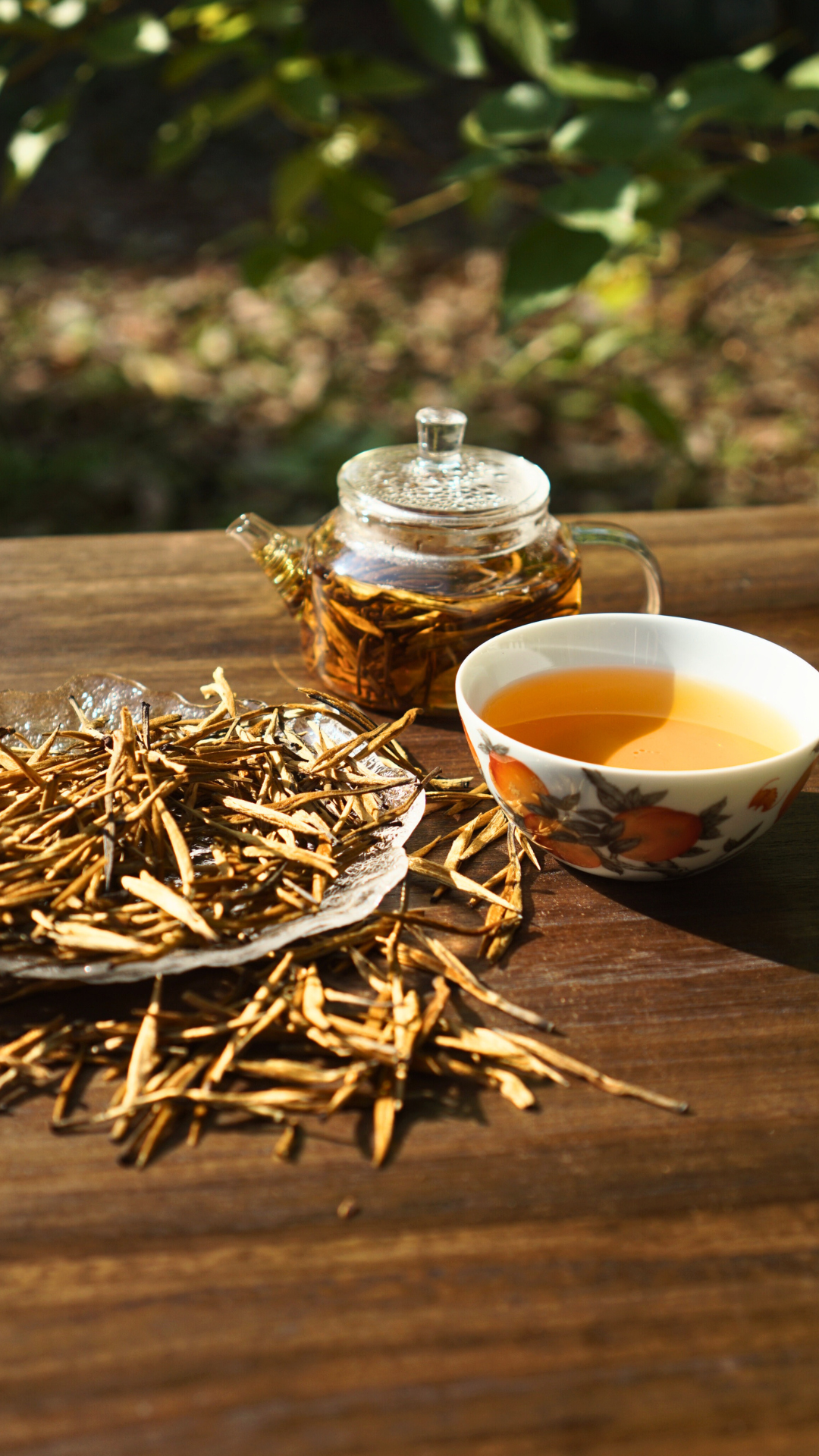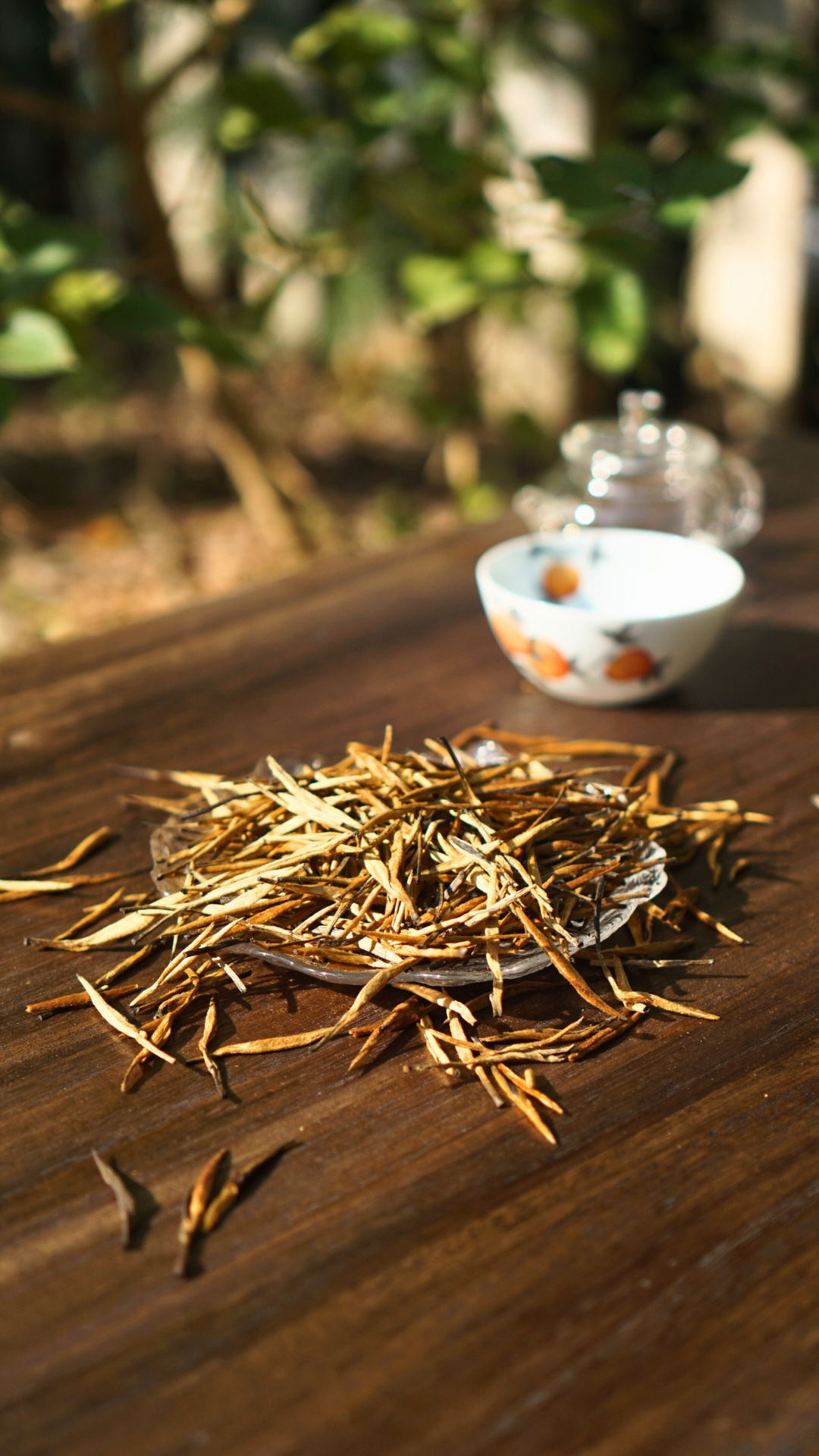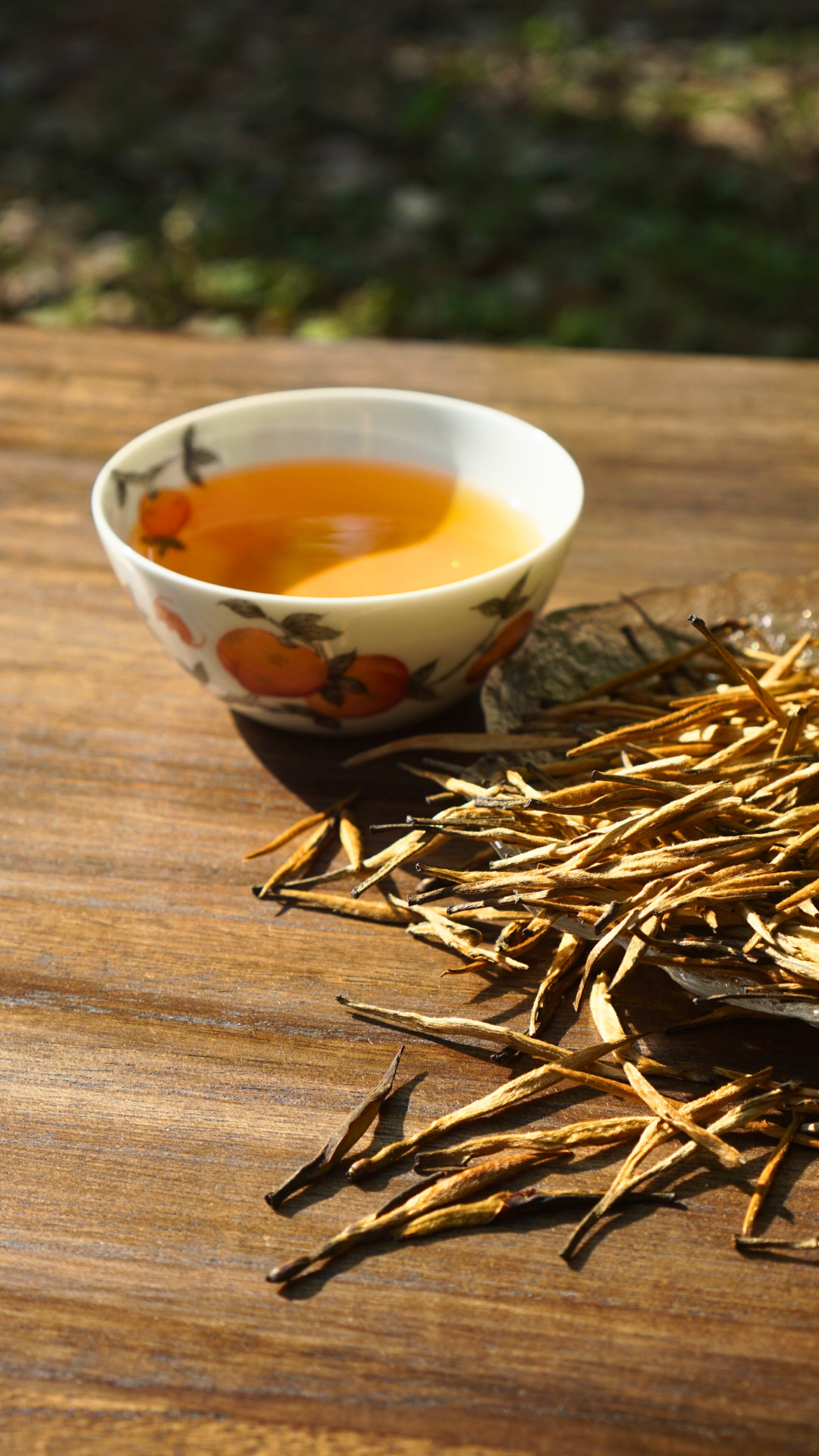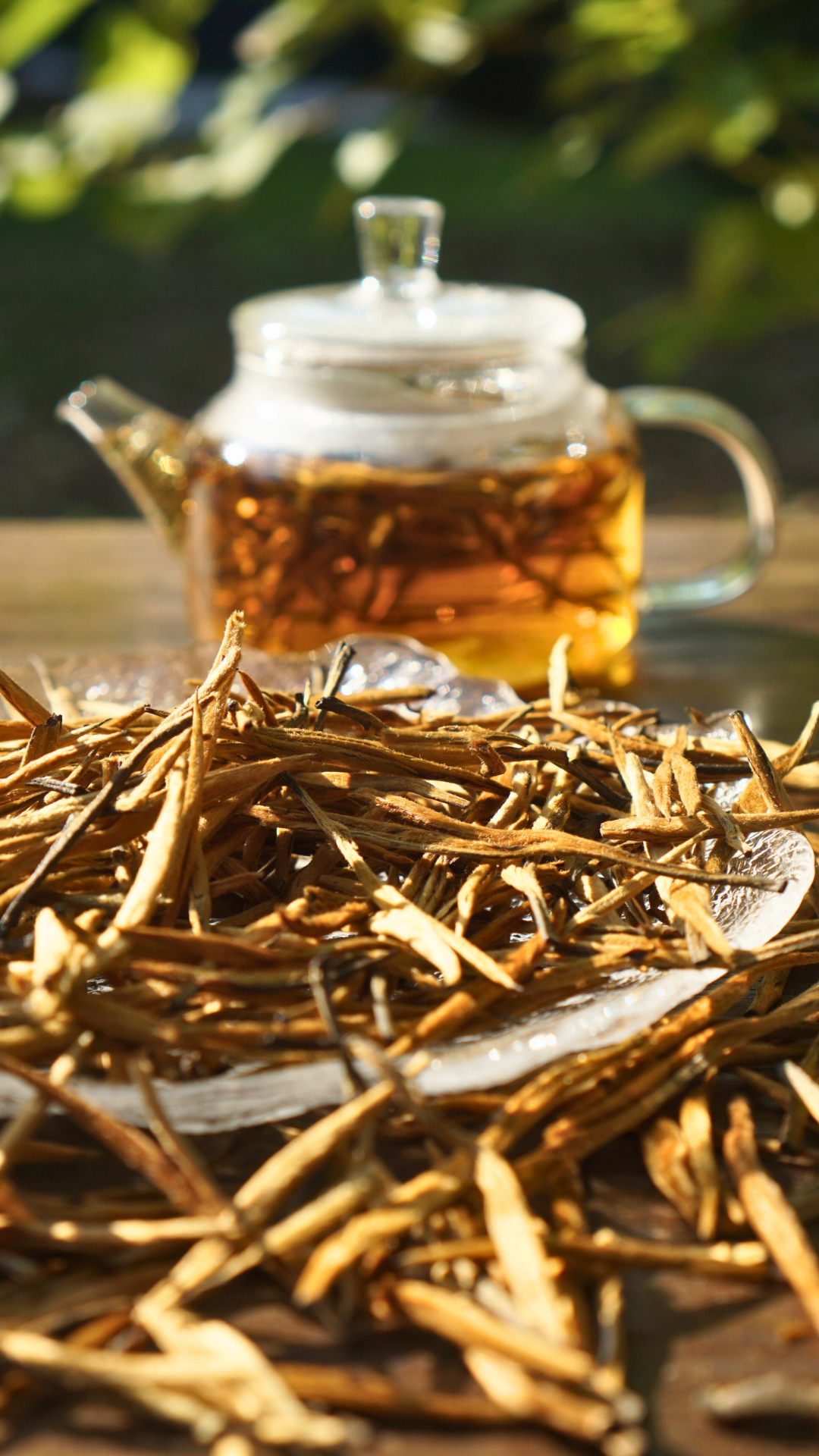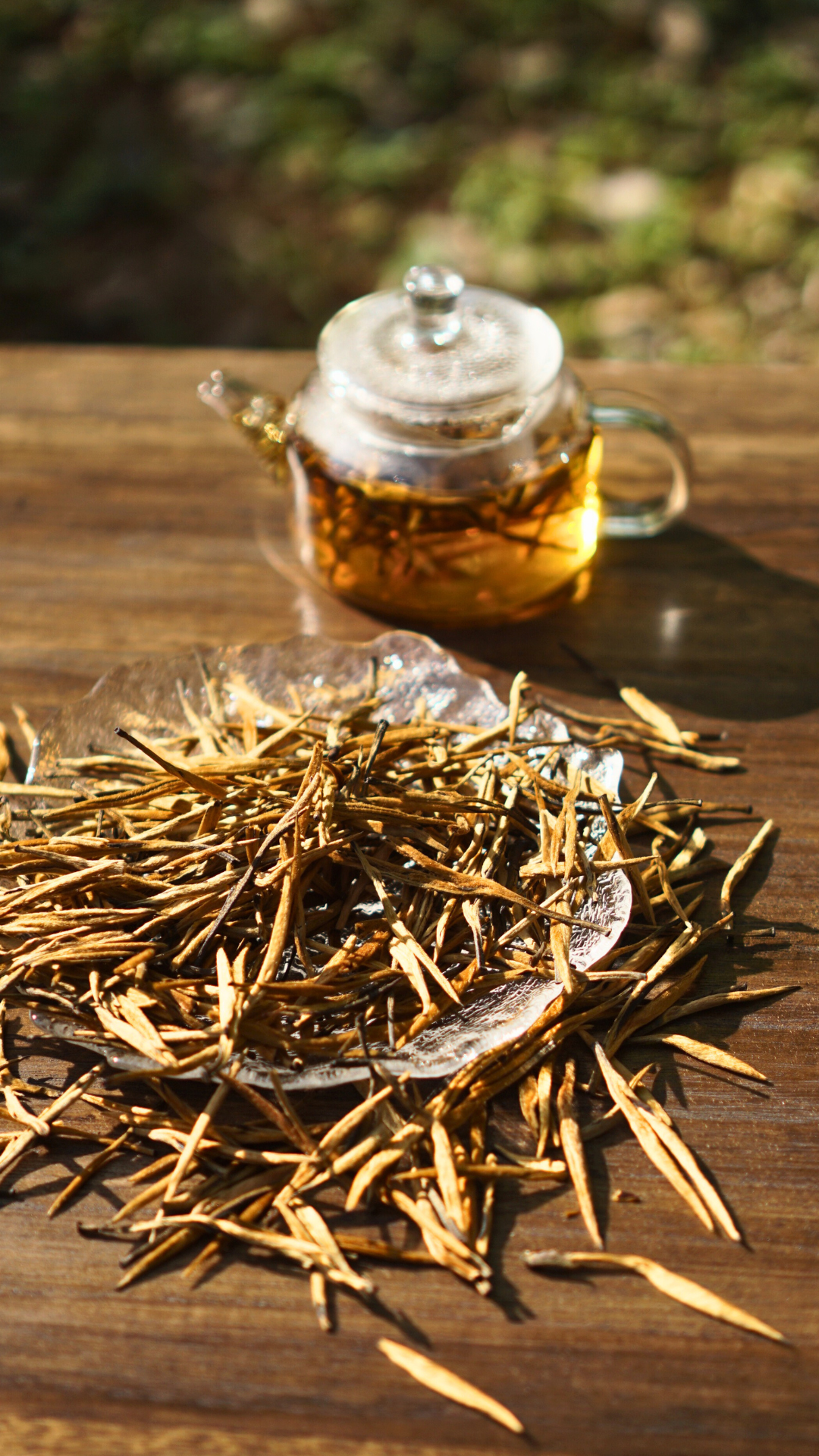Dianhong Golden Needle-Large Buds
Dianhong Golden Needle-Large Buds
滇红大金针
The selection of materials for this Dianhong golden needle black tea is quite meticulous, picked from the early spring single buds of wild ancient tea trees in Fengqing(凤庆).
Fengqing County(凤庆县), located in the southwestern part of Yunnan Province and the northwest of Lincang City(临沧市), is renowned as the birthplace of Dianhong tea. Fengqing has a long history of tea cultivation and production, with ancient tea trees cultivated for over 3,200 years in Xiangzhujing(香竹箐), more than 20,000 acres of ancient tea gardens that have been around since the late Qing Dynasty, and over 30,000 acres of wild ancient tea tree groves.
The conventional processing steps for Dianhong black tea include wilting, rolling, fermenting, and drying, while the golden needle variety has an additional step for shaping the leaves, making the dried tea look even better.
This Dianhong golden needle has a straight appearance resembling a needle, with clear, well-defined strands, standing elegantly adorned with golden tips. A distinctive feature of the golden needle produced in the Fengqing area is its elongated shape, with each bud measuring about 6 to 7 centimeters in length. The dried tea exhibits aromas of malt sugar intertwined with the fragrance of rose and a subtle hint of cream, presenting a delightful sweet aroma.
After brewing, the color of the tea liquor is a bright orange-red, exuding a rose scent, with a creamy aftertaste. It enters the palate gently and smoothly, fresh and sweet, making it a premium quality among Dianhong black teas.
Picking and Processing
Picking and Processing
Tea gardens typically harvest in April, with high requirements for leaf tenderness. Spring tea is harvested in 6-7 batches, primarily picking one bud with one to two leaves.

Key processing points for Gong Fu black tea:

Withering: After picking, fresh leaves are placed in withering troughs or withering machines, or can be spread on the floor for natural withering. The purpose of withering is to evaporate appropriate amounts of moisture, making leaves soft and more resilient, promoting internal chemical changes, and eliminating the grassy smell. Generally, withered fresh leaves should reach about 65% water content. Under normal temperature and humidity, natural withering takes 7-8 hours. Withering time is shorter with higher temperatures and lower humidity, and longer in opposite conditions. Proper withering is indicated by shrunken, soft leaves that clump when squeezed but separate when released, darkened color, loss of shine, reduced grass smell, and emerging fragrance. Withering is a crucial processing stage for developing black tea's aroma.

Rolling: The rolling process for strip-style black tea is similar to green tea, but with higher standards - the strip formation rate must exceed 90%, cell destruction rate over 80%, and tea juice should ooze but not drip. Therefore, higher performance is required from rolling machines.

Fermentation: Fermentation is a unique stage in black tea processing, allowing polyphenols to fully oxidize, creating black tea's characteristic color, aroma, and taste. Black tea is called fermented tea because its red liquor and leaves result from fermentation. Currently, Kung Fu black tea processing still follows traditional methods, with a relatively long processing cycle - over 4 hours from rolling to drying. Fermentation actually begins during rolling, with separate fermentation on the floor lasting only about 2 hours. The ideal fermentation temperature is 24-25°C, with humidity above 80%. Air circulation is necessary for complete oxidation. Proper fermentation is achieved when the grassy smell disappears, aroma develops, and leaves turn red.

Drying: Drying is the final step in black tea processing, aimed at stopping fermentation, evaporating moisture, and achieving crude tea product requirements. Black tea drying typically uses drying machines with a two-stage process.
The first stage is called rough drying, the second final drying. Rough drying should achieve 20%-25% moisture content, final drying 4%-6%. Between stages, tea leaves are cooled and allowed to reabsorb some moisture before the second drying. Drying temperatures follow the principle "high for rough drying, low for final drying" - high being 110-120°C, low being 85-95°C.
Brewing
Brewing
White porcelain teaware is best suited for brewing Gong Fu black tea, such as white porcelain gaiwan, white porcelain teapot, white porcelain cups, etc.
First rinse all utensils with hot water, then add about 3-5 grams of black tea, and pour 90°C~95°C hot water into the gaiwan to 2/3 full, then quickly pour it out - commonly known as "tea rinsing."
When pouring with the teapot, the steeping times from the first to tenth infusion should be approximately: 15 seconds, 25 seconds, 35 seconds, 45 seconds, 1 minute, 1 minute 10 seconds, 1 minute 20 seconds, 1 minute 30 seconds, 2 minutes, 2 minutes 30 seconds. The steeping time can be adjusted according to personal preference.
After brewing, it is recommended to pour the tea into white porcelain cups for appreciation. If a golden ring remains on the cup wall for a long time without dissipating, such black tea is considered premium and precious.
Black Tea Storage
Black Tea Storage
The quality of black tea is determined during the fermentation
process, and if stored properly, its quality remains relatively stable. Black tea has a long shelf life that can last for several years.
The key principles for storing black tea are: avoid light exposure, keep sealed, maintain room temperature, and prevent moisture.
1. Storage Container Selection
Although tea often comes with canisters or bags when purchased, it's best to use professional containers for long-term storage. The ideal containers for tea are made of porcelain, stainless steel, or tinplate. Before placing black tea inside, wrap it in plastic bags and remove air from the bags to better preserve the tea's aroma.
2. Storage Environment Conditions
The storage environment directly affects the quality of tea preservation. The optimal storage environment for tea should be dry, room temperature, and away from light. Additionally, avoid humid conditions, as black tea can easily absorb moisture and deteriorate. Direct sunlight will destroy vitamin C in tea leaves and alter their color and taste; high temperatures will accelerate the breakdown of effective components, reducing nutritional value.
3. Storage Duration
Although black tea can be stored for long periods, even under optimal storage conditions where it can maintain its flavor for 3-5 years, it is still recommended to consume it within 1 year.
- Gong Fu Black Tea
- 500g/pouch
- Free Shipping
Couldn't load pickup availability
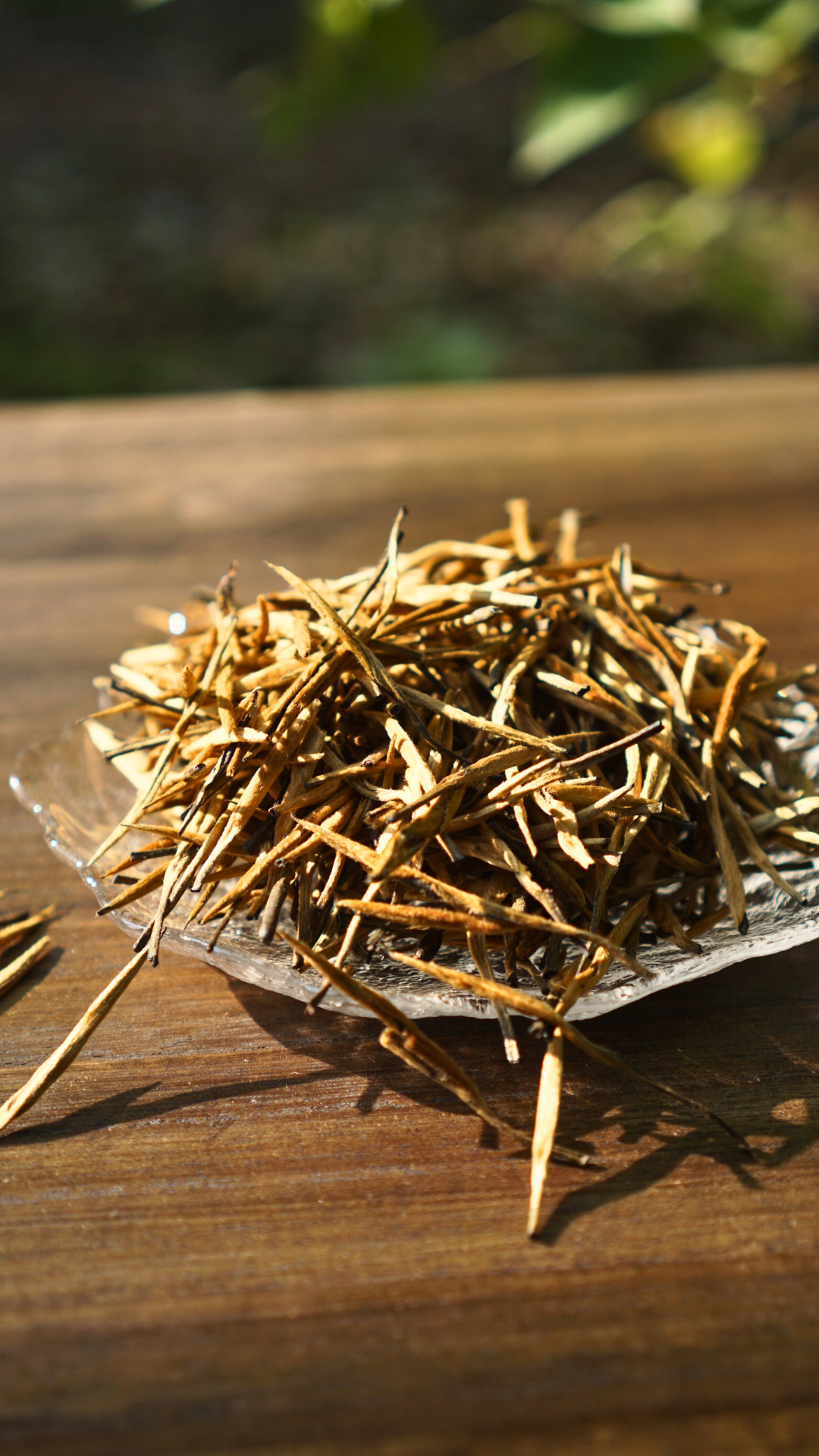
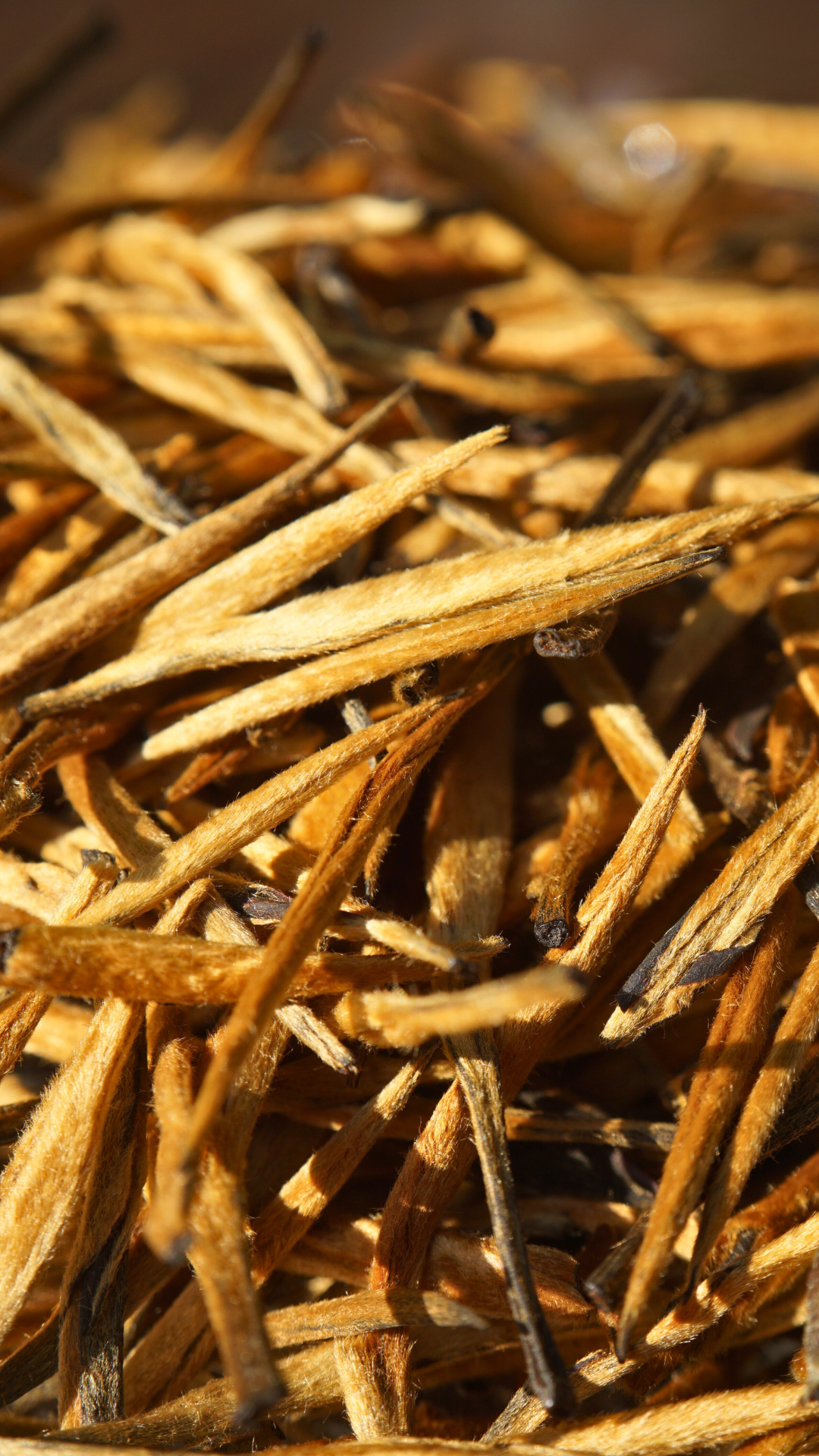
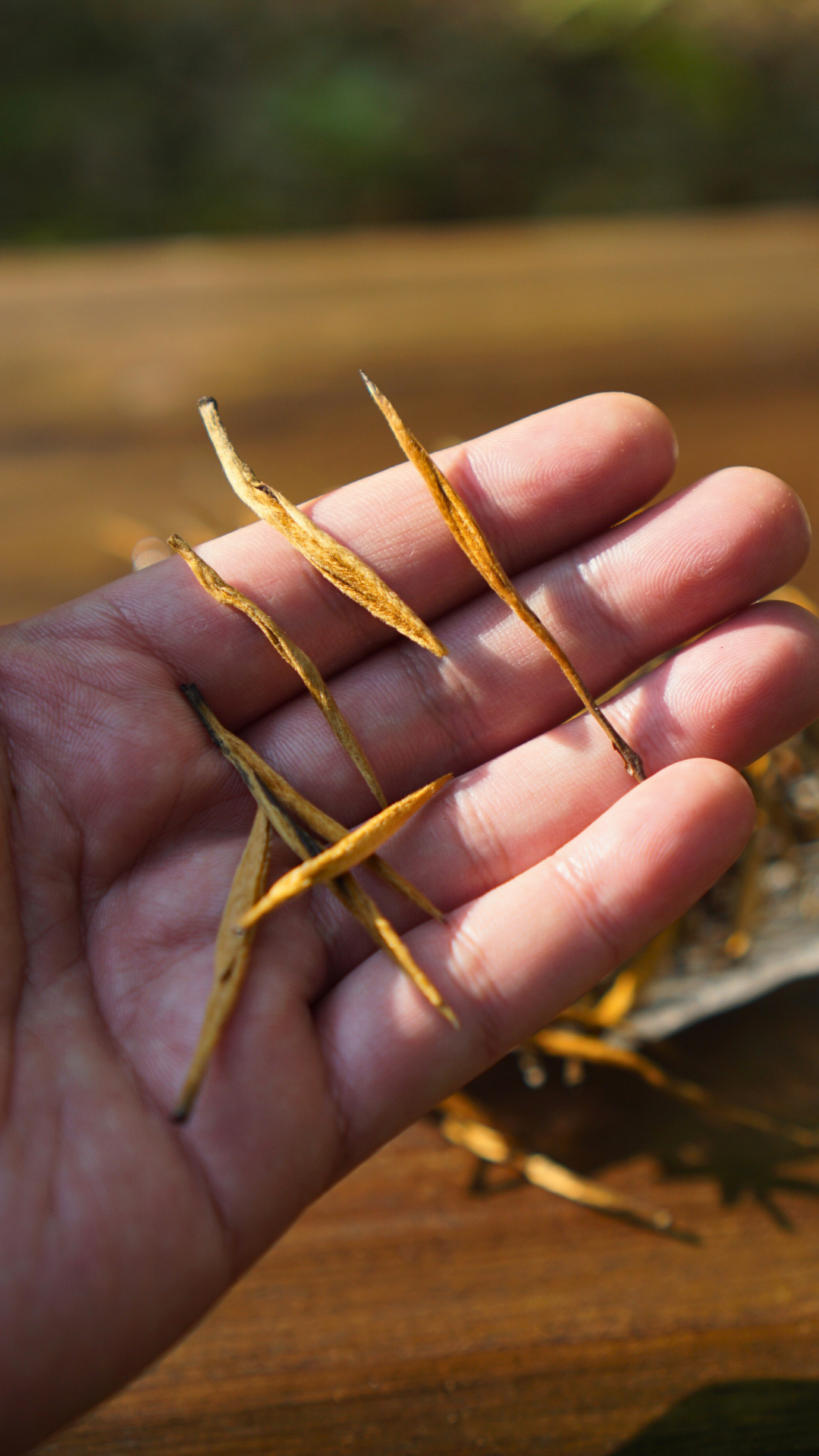
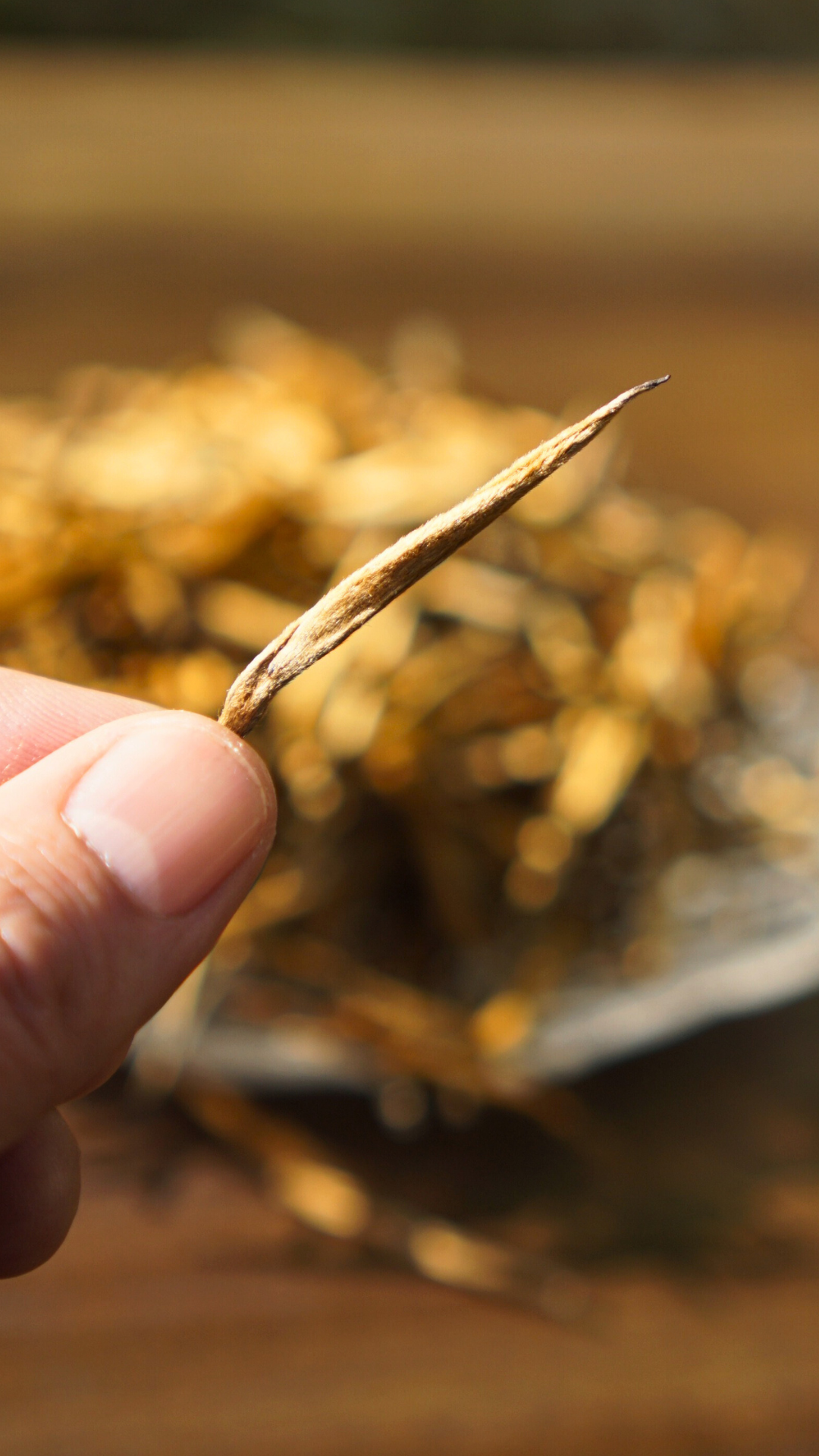
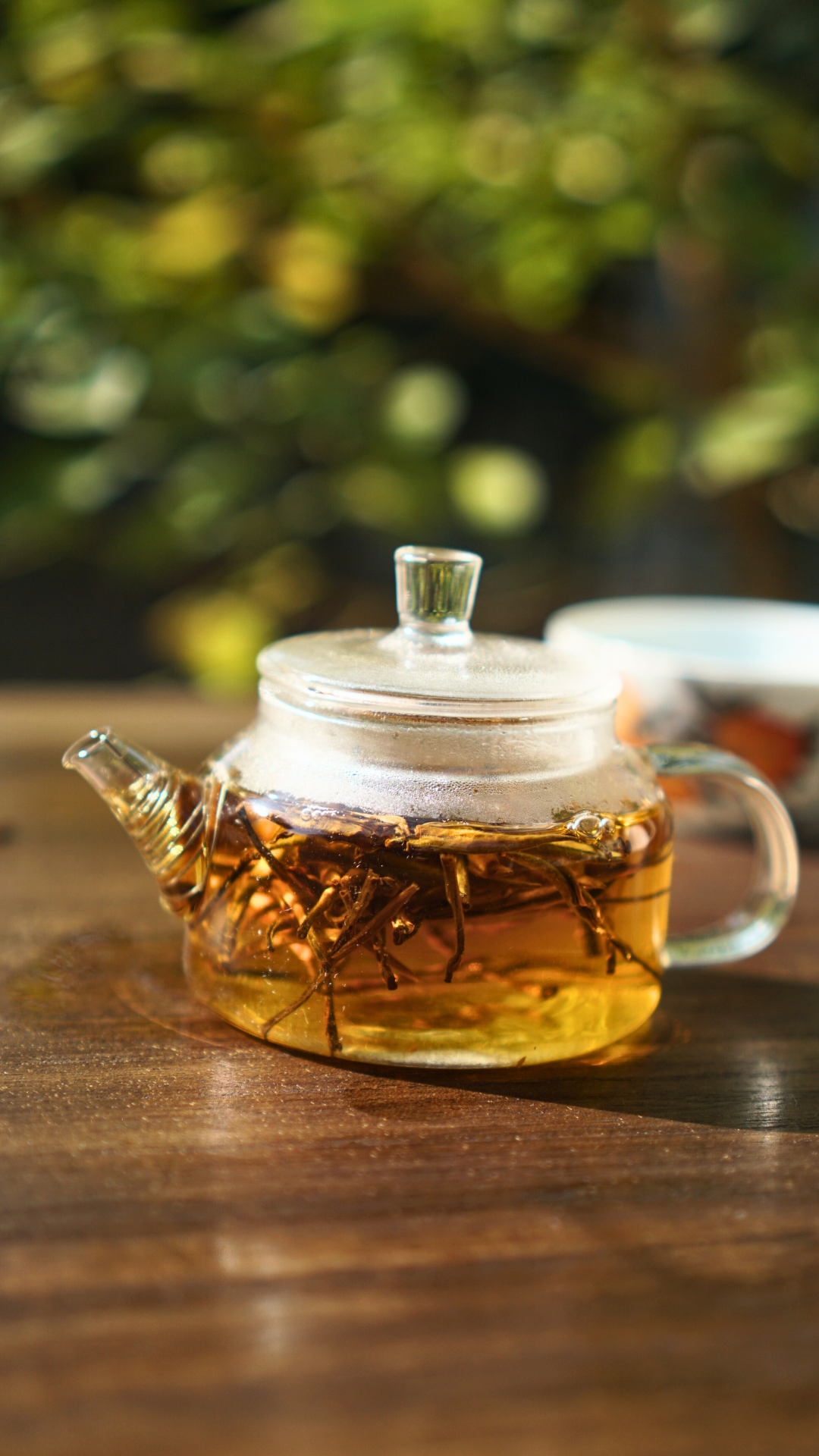
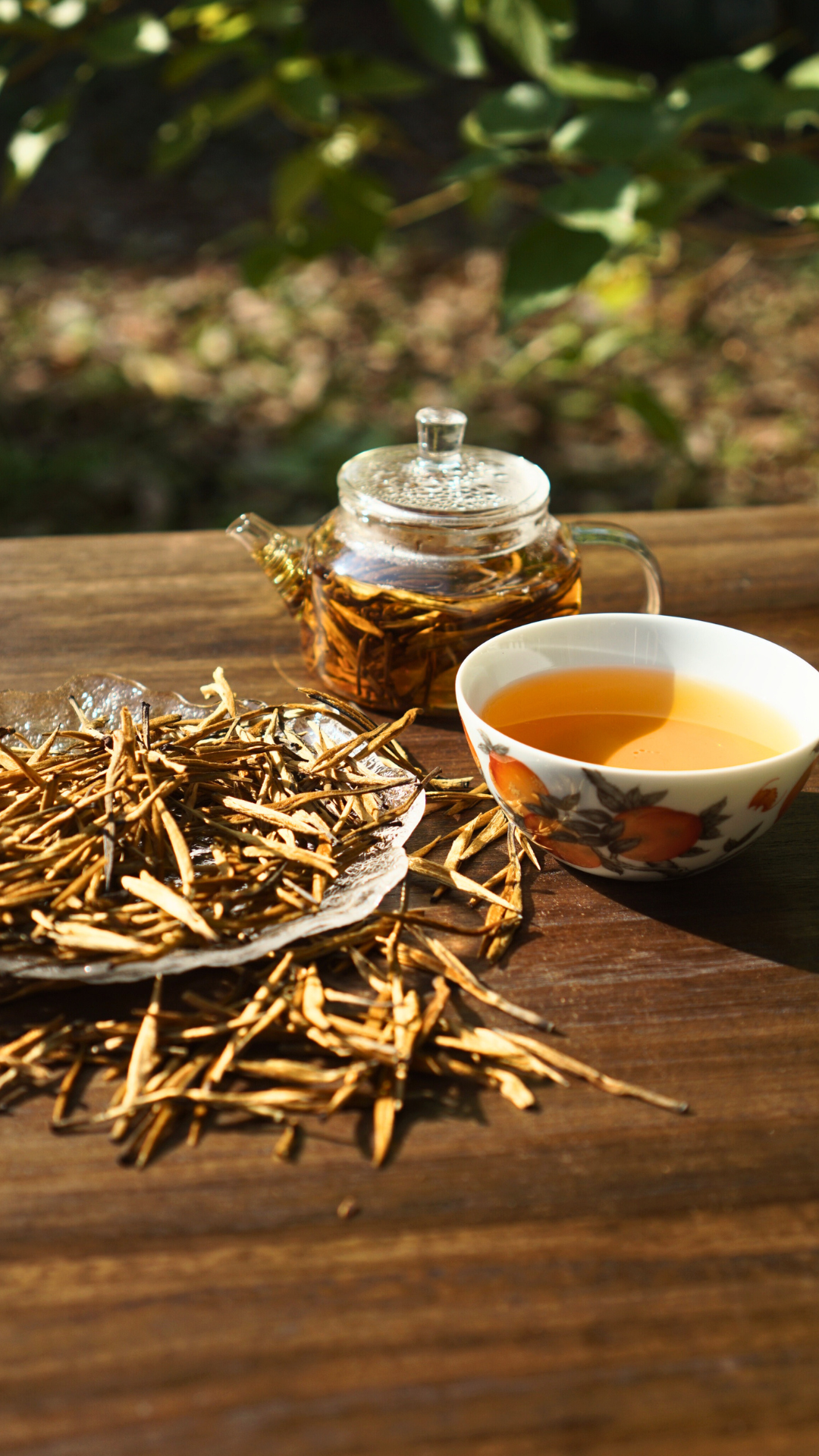
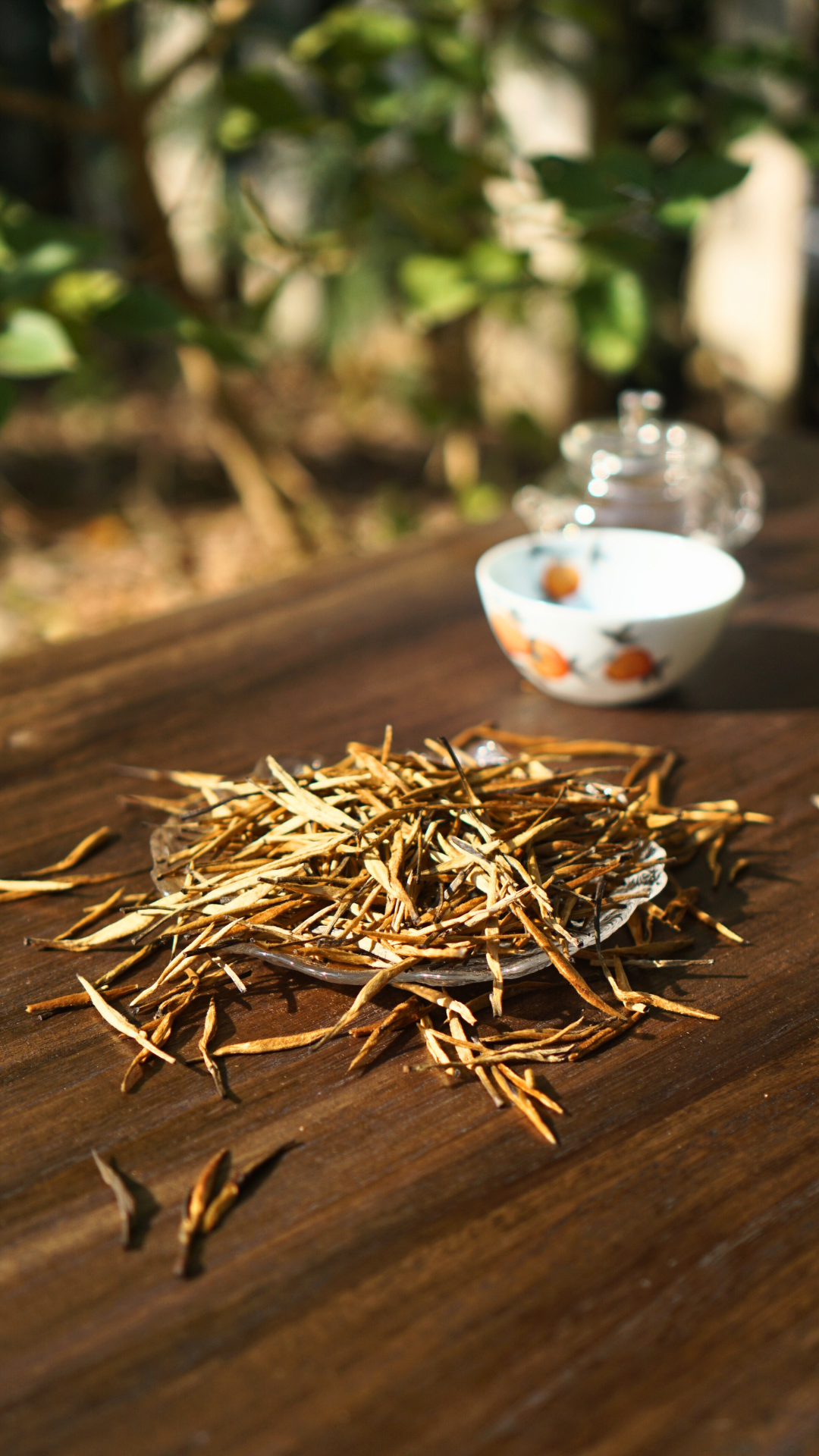
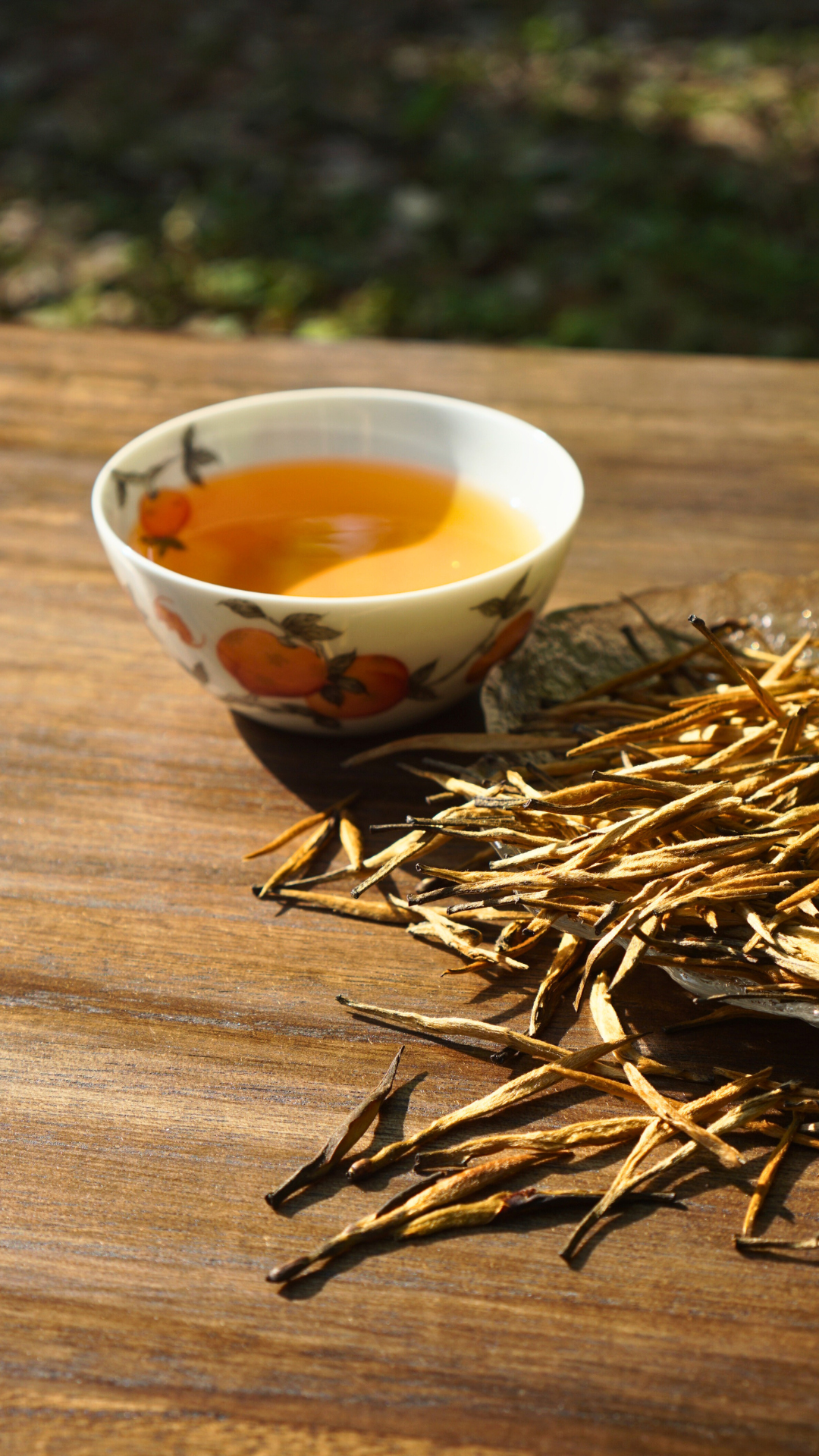
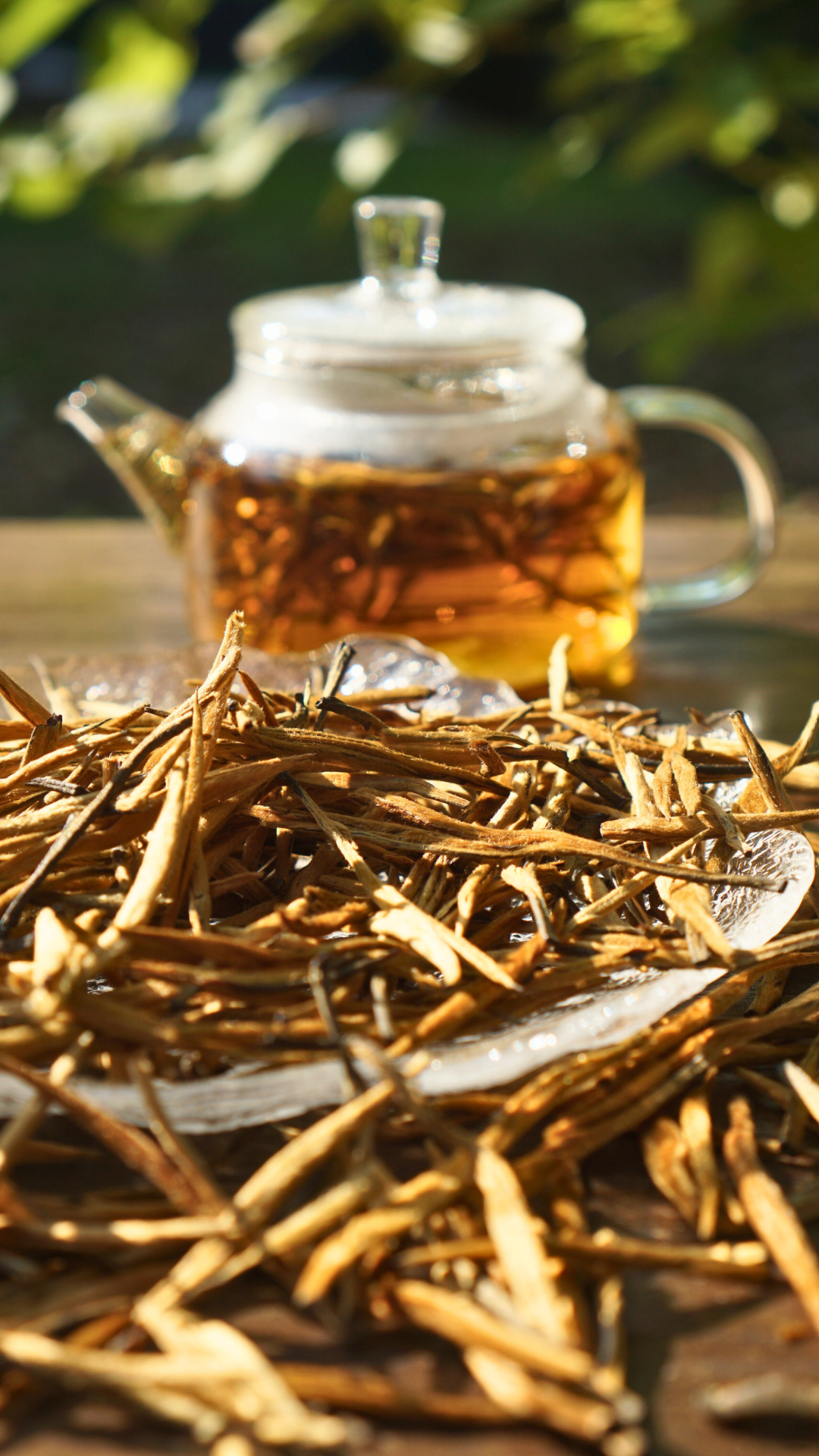
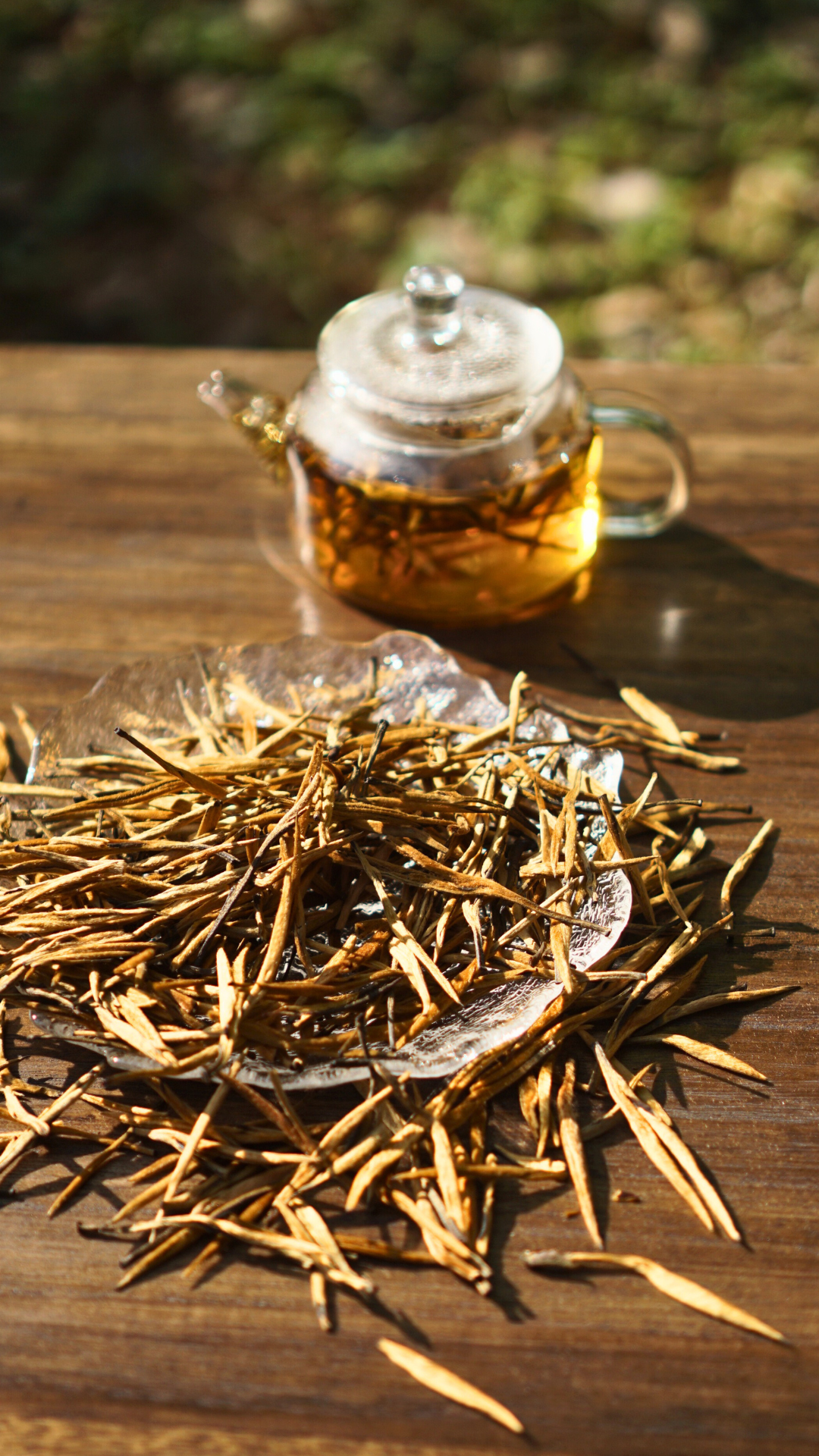
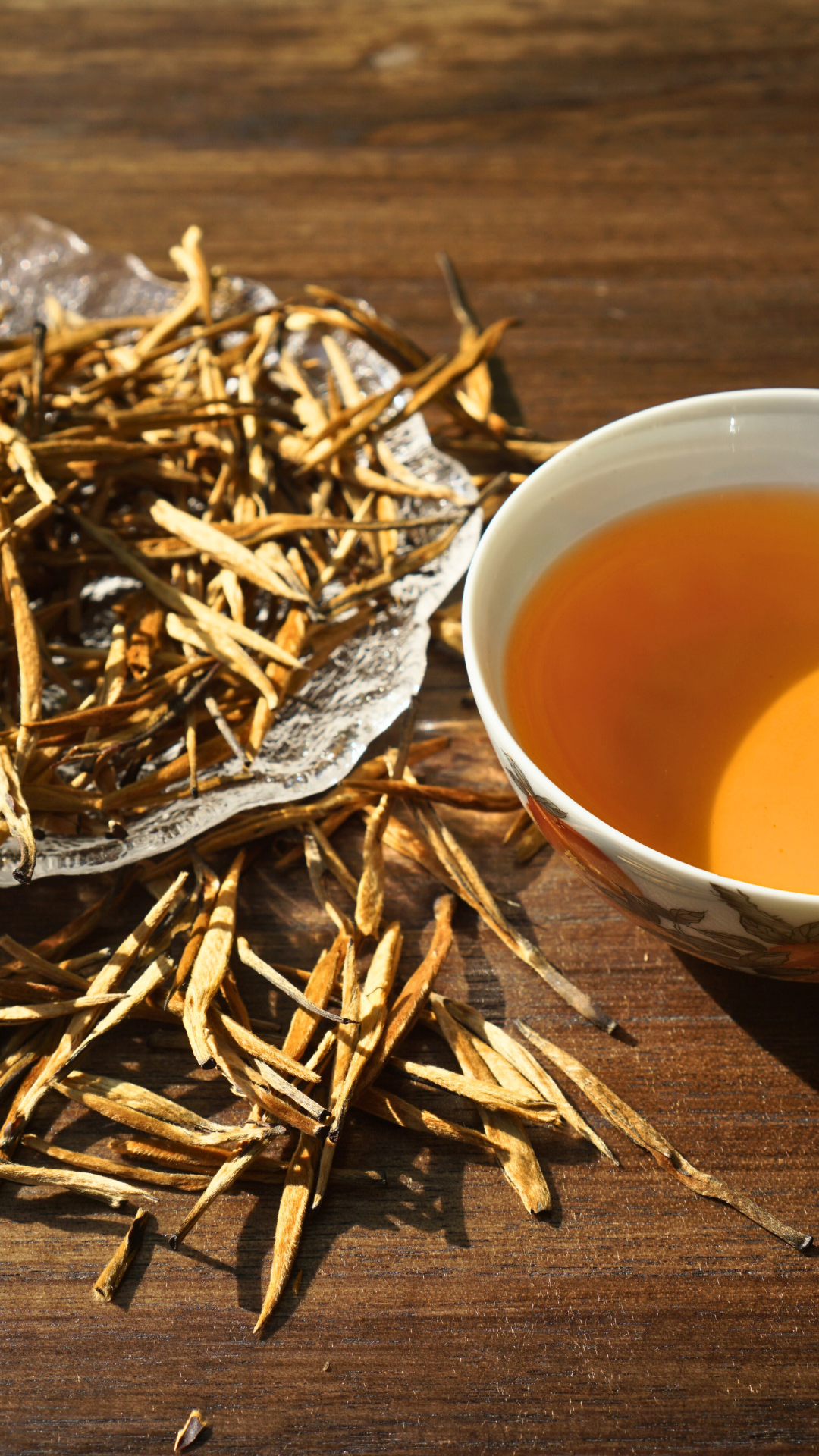
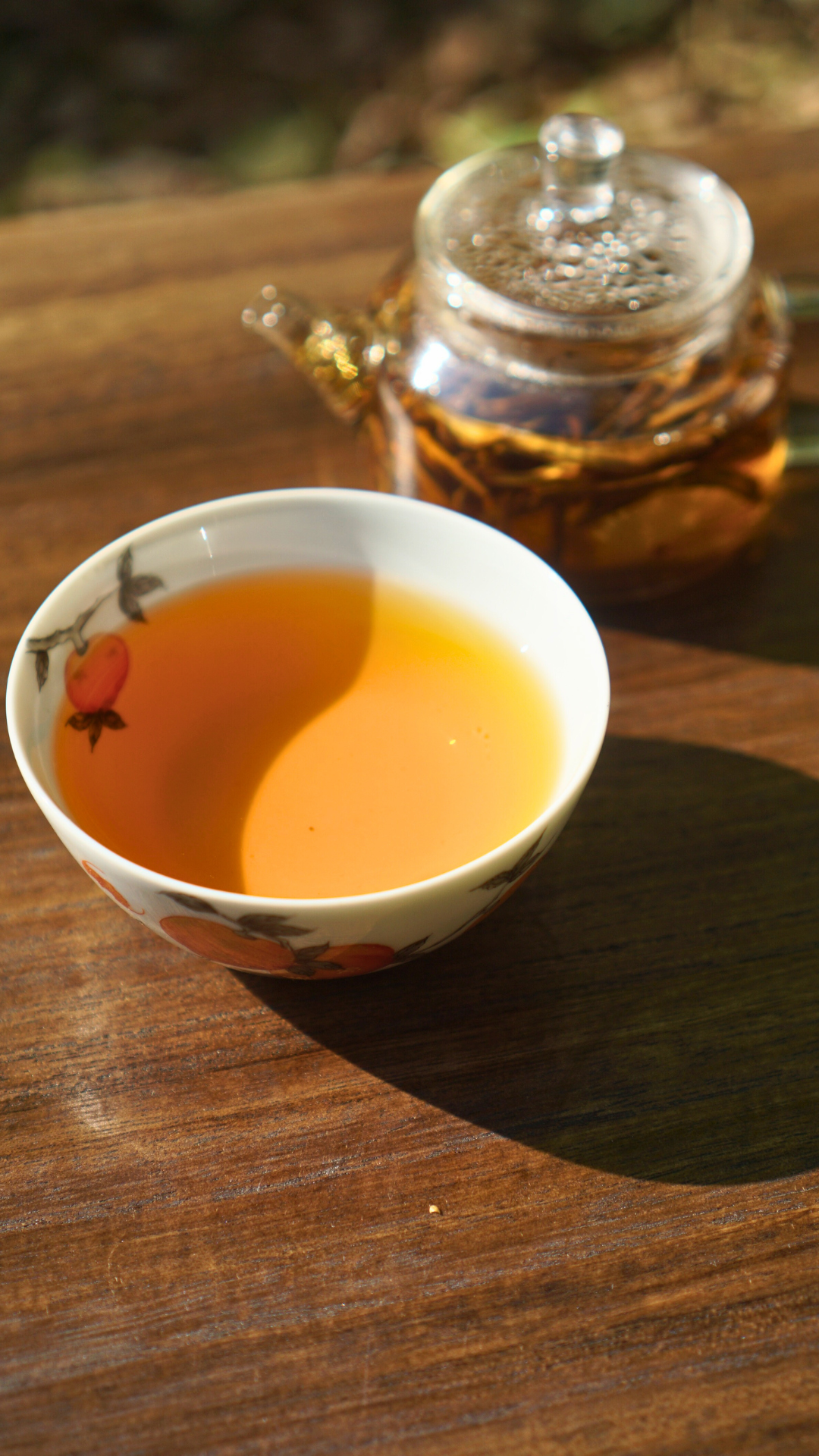
The dry leaf is large and needle-shaped, covered in golden hairs with only the occasional streak of black leaf peeking through. Most of the material appears to be buds, though in a few places you can see a bit of leaf still attached. The aroma is gentle but layered—reminiscent of Bai Mu Dan—with faint floral touches and a hint of molasses. I used 5 grams in a 110 ml porcelain gaiwan, starting with a 10-second infusion after a rinse and adding 5–10 seconds with each steep.
As soon as the leaves warm up, they release a rich strawberry jam aroma that carries over clearly into the first steep. The liquor is a pale ochre, slightly cloudy from the fine hairs, and smells softly of sweet boiled corn. In the mouth, it’s juicy and smooth, with notes of strawberry preserve, molasses, and a delicate floral tone that lingers on the palate. The second steep is thicker, with a sweeter finish, and as it cools, the corn note becomes more noticeable. By the third infusion, there’s a bit more dryness and a faint ethereal edge rising from the throat between sips.
The fourth and fifth infusions deepen slightly in color and hold their flavor well. The jammy note fades, replaced by a fresh, fruity brightness and—once cooled—a hint of milkiness that suits this style of tea. A blended cup of the first five infusions is silky and light, showing molasses, soft floral notes, and traces of preserved fruit. From the sixth steep onward, with longer brew times, the tea gains complexity, staying smooth but picking up a little astringency.
Eventually, as infusions reach 90 seconds or more, warm spicy notes begin to emerge—clove, nutmeg, and a hint of pepper. The wet leaf is plump and whole, reflecting the tea’s quality, with aromas of molasses and spice. This was a session that began softly and built up in both intensity and character—a tea with charm, depth, and a story that unfolds patiently in the cup.
Thank you, Alen. Your reviews are always so thoughtful and detailed. Our green tea sampler is almost ready — we’ll send it to you first and can’t wait to hear your thoughts.

